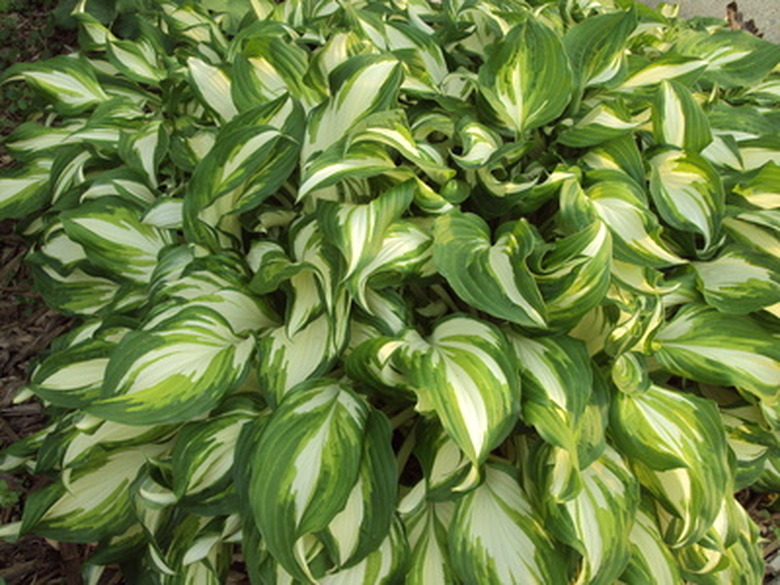How To Keep Hostas From Spreading
Things Needed
- Shovel
- Trowel or knife
- Watering tool
Hostas are hardy perennials, most often grown for their distinctive foliage and for the fact that they grow easily–even in full shade. For that reason, they are often planted as a ground-cover plant under trees or in dark corners of the garden. Hostas come in a wide variety of shapes, sizes and colors, but one thing they do have in common is a tendency to spread, especially those varieties with rhizomes (horizontal underground roots). This can create a problem in home gardens with limited space. The best way to keep a hosta from spreading is to cut the plant back.
Step 1
Wait until spring, when you can see the new shoots of the hostas beginning to grow. You can also divide in August, when the flowers fade, according to Clemson University. Clear the area around the plant of mulch and plant debris so you can see where the hosta ends.
- Hostas are hardy perennials, most often grown for their distinctive foliage and for the fact that they grow easily–even in full shade.
- For that reason, they are often planted as a ground-cover plant under trees or in dark corners of the garden.
Step 2
Dig up the entire plant. Simply pruning the leaves and stems off the top of the plant will not stop the underground roots from spreading. Shake or rinse the soil off of the roots or rhizomes.
Step 3
Cut the plant in half or thirds with a sharp knife or trowel. Discard the excess, or save it to plant in a new location.
Step 4
Replace the now-smaller hosta in its original hole, and backfill with the removed soil. Or plant it in a new location, in a hole that is as deep as the root ball (or at least a foot deep, if the root ball is shorter than 12 inches) and at least twice the width. Water thoroughly, and keep the soil very moist for two weeks, Ohio State University suggests.
- Simply pruning the leaves and stems off the top of the plant will not stop the underground roots from spreading.
- Or plant it in a new location, in a hole that is as deep as the root ball (or at least a foot deep, if the root ball is shorter than 12 inches) and at least twice the width.
Tip
Planting hostas in containers is another easy way to keep them from spreading, as the plant's roots will simply have nowhere to go.
